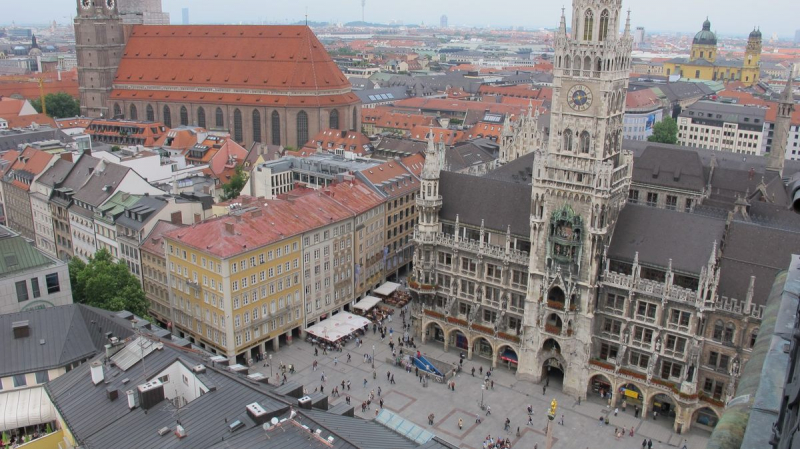Rathaus Glockenspiel Clock Tower
The Rathaus-Glockenspiel in Munich, Germany, is a well-known tourist attraction that is situated in Marienplatz, the heart of the city. The building was designed by Georg Hauberrisser and finished around 1900. The performance shows the union of Duke Wilhelm V and Renata of Lorraine, as well as the traditional cooper's dance and jousting match. The 260-foot tower's 43 bells and 32 life-size statues recreate two historical events twice a day.
The story of the extravagantly lavish marriage of Bavarian Duke Wilhelm V in 1568 is told in the clock's upper section, where mechanical jousters depicting Bavaria in blue triumph over knights of Lothingren in red. The royal joust, which took place in the Marienplatz where the clock is now, was the highlight of the original celebration, which lasted two weeks and was attended by thousands of revelers.
A few blocks away is the Hofbraeuhaus, the city's first brewery, founded by Wilhelm V to meet his needs for a brown ale. Aside from his lavish wedding and beer, Duke Wilhelm V was also known as a militant Catholic leader who took increasingly drastic measures in both personal piety and public anti-Protestant policy. Under his leadership, Bavaria became known as the epicenter of early counter-reformation actions, including the final expulsion of Catholics from Bavaria and numerous witch hunts - a legacy that his son Maximillian I carried on after his death.
Coopers (barrel makers) perform their signature Schäfflerstanz on the glockenspiel's lower section. The Schäfflerstanz, or Cooper's Dance, is supposedly connected to the end of a plague in 1517 when the neighborhood coopers used some foot-slapping dancing to entice the terrified citizens back out onto the streets. Munich did experience a terrible plague in 1635 that killed off about a third of the population, though the details may be apocryphal. The Schäfflerstanz, regarded as one of the last authentic guild dances in Germany, is customarily performed by live dancers every seven years during the Fasching festival.
A small golden bird chirps from the top of the glockenspiel at the end of the show. The entire performance lasts about 15 minutes.
The glockenspiel, a relatively new addition to the ancient town square, was built in 1908 as part of the second half of the gingerbread Gothic-revival New Town Hall. Surprisingly, the building escaped major damage during WWII's heavy bombardment, which left other nearby buildings without roofs. The carillon was apparently out of tune during a 2007 renovation, but this has since been corrected.
Every day at 11 am, the show begins. In the summer, there are additional 12- to 15-minute shows at noon and 5 pm. Visit the Hugendubel bookstore across the street and ascend to the third floor for a better vantage point.
At 9 o'clock in the evening, two figures - an angel on one side and a night watchman on the other - make a more subtle appearance.
Year of construction: 1908
Total Height: 260 feet (79 m)
Location: Munich, Germany











